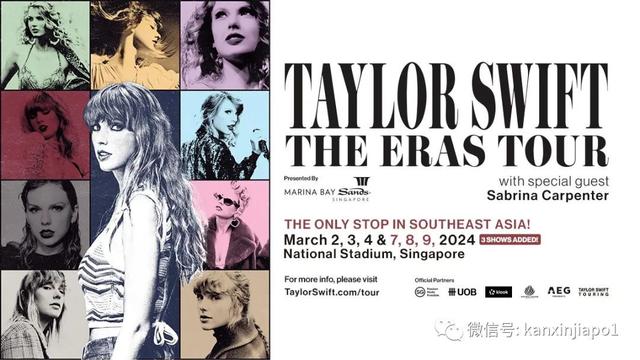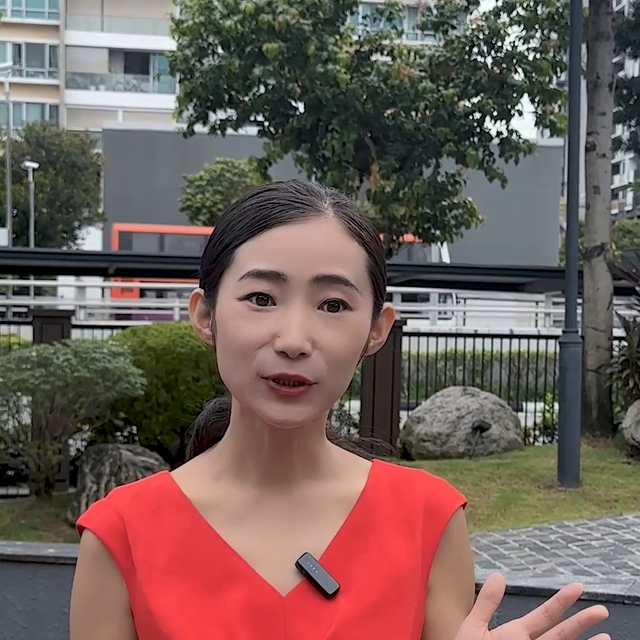2018.9.1经济学人官译:私募股权
Private equity
Barbarians grow up
As private-equity firms mature, the way they buy and sell is changing—as is everything in between
私募股权
野蛮人成长记
随着私募股权公司走向成熟,其买卖方式随之改变,其他的方方面面也在变

“SELL in May and go away,” say the denizens of Wall Street, and to the usual summer lethargy is added the excuse of a heatwave. But for those working in private equity, there is no let-up. The “shops”, as private-equity funds like to call themselves, are stuffed with money and raising more: $1.1trn in “dry powder” ready to spend around the world, according to Preqin, a consultancy, with another $950bn being raised by 3,050 firms.华尔街的人常说:“五月清仓,完事离场。” 加上热浪来袭的借口,夏季通常都是一片慵懒怠惰。但那些在私募股权公司工作的人却松懈不得。各家“店”(私募股权基金喜欢这样自称)积攒了大量资金,而且还在不断增加。据咨询公司Preqin的数据,除了1.1万亿美元的“干火药”可随时投向世界各地,3050家私募股权公司正在另外筹集9500亿美元 。
So hot is the market that there are rumours of money being turned away. Even the firms themselves, which receive fees linked to assets under management, cannot fathom how to use all that may come their way. It is not for want of trying. The year to date has seen nearly 1,000 acquisitions (see chart 1). Health care has been particularly vibrant (see next article).市场如此火爆,传言称有些资金都不得其门而入。私募股权公司对自己管理的资产收取管理费,连它们也不知道该怎么利用所有这些一拥而入的资金。它们做出的尝试并不少。今年迄今已有近1000宗收购交易(见图表1)。医疗保健市场尤其活跃。

点击此处添加图片说明文字
Even more noteworthy than the volume of money pouring into private equity is the way the business is maturing. Banks are reconfiguring their operations to serve such a transaction-heavy clientele. Limited partners—the public-pension schemes, sovereign-wealth funds, endowments and family offices that provide the bulk of private-equity investment—are playing more active roles. It all adds up to a stealthy, but significant, reshaping of the financial ecosystem.相比涌入私募股权市场的资金量,更值得留意的是这项业务正在走向成熟。银行正在重新调整业务,以便为这个业务繁忙的客户群提供服务。作为私募股权投资资金的主要来源,公共养老金计划、主权财富基金、捐赠基金和家族财富管理办公室等有限合伙人正在发挥更积极的作用。这一切正在悄然却显著地重塑金融生态系统。
Data on returns are patchy. Odd measures are often used to gauge performance and disclosure is intermittent. But there is plenty of reason to believe that private-equity funds have done well in the past decade. Low interest rates have favoured their debt-heavy business model. Rising asset prices have made it easy to sell for large gains.收益方面的数据零散不全。衡量业绩的手段往往稀奇古怪,信息披露时有时无。但有充分理由相信私募股权基金在过去十年里表现不俗。低利率有利于其高债务的商业模式。资产价格节节攀升,可轻易出售获取厚利。
And some recent clouds on the horizon have dissipated. Mooted tax reforms would have stopped private-equity firms from deducting the interest they pay on debt from their taxable income and forced their managers to pay the personal-tax rate on their investment profits (or “carried interest”), rather than the lower capital-gains rate. In the event, however, the new rules brought in last year did not touch carried interest at all and only slightly reduced the benefits of debt.不久前浮现的一些阴霾也已消散。之前酝酿的税制改革本来要阻止私募股权公司从其应税收入中扣除所支付的债务利息,并迫使基金经理们就其投资利润(又称“附带权益”)按个人所得税税率而非较低的资本利得税率缴税。然而到头来,去年提出的新规则并未触及附带权益的问题,只是略微调低了债务税盾。
Another fear had been that regulations would become less supportive. Jay Clayton, who took over at the Securities and Exchange Commission (SEC) last year, made it clear that he wanted to see a shift towards public markets. He noted that the loss of companies to private equity had denied opportunities to small investors. A flurry of public offerings followed his appointment, including sales by private-equity firms. But the burdens of being listed remain heavy. These include onerous filing requirements and the knowledge that routine business decisions may become the subject of caustic public debate.之前另一个引人担忧的因素是监管支持力度会减弱。去年接任美国证券交易委员会(SEC)主席的杰伊·克莱顿(Jay Clayton)明确表示希望企业回流公开市场。他指出,企业投奔私募股权,剥夺了小投资者的投资机会。在他上任后,连串公开上市随之而来,包括私募股权公司出售的公司股权。但企业上市的负担仍然很重,包括要应对繁琐的申报要求,而且日常业务决策都可能引起激烈的公共争论。
The result is that the value of public companies being taken private continues to rise (see chart 2). The figures understate the trend, since they omit the growing number of large companies selling off divisions to private-equity firms. These deals attract little attention—which is partly the point. Headquarters do not move; senior executives keep their jobs. Recent examples include the decision by J.M. Smucker, a food company, to sell its baking business to Brynwood Partners and GE’s move to sell its industrial-engines division to Advent International. Similarly unremarked is the rising number of transactions in which one private-equity firm sells to another, rather than listing an asset on the public markets.结果是上市公司被私有化的规模持续上升(见图表2)。图中数字并未充分反映这一趋势,因为其中没有考虑越来越多的大公司将旗下部门出售给私募股权公司这一情况。这些交易很少受到关注——但在一定程度上,要的就是这样的效果。总部不变,高管留任。最近的例子包括食品公司斯味可(J.M. Smucker)决定将其烘焙业务出售给私募股权Brynwood Partners,以及GE将其工业发动机部门出售给安宏资本(Advent International)。另外,同样不受注意的是,私募股权公司更多地把资产出售给其他私募股权公司,而不是公开上市。

点击此处添加图片说明文字
Private equity’s growing heft has knock-on effects throughout the financial sector. Goldman Sachs has 25 merger bankers assigned to private-equity firms, working on deals alongside colleagues who focus on specific industries. Its analysts monitor 5,500 private-equity holdings—50% more than the number of listings on the American public markets. The other big institutional banks, such as Morgan Stanley and JPMorgan Chase, are just as attentive to private equity.私募股权公司的势力与日俱增,在整个金融领域产生了连锁效应。高盛有25位合并交易银行专家被派驻到私募股权公司内,与专注特定行业的同事一起推动交易。高盛的分析师监控着5500项私募股权资产的动态,这比在美国公开市场上市的股票数量还多50%。其他大型机构银行,如摩根士丹利和摩根大通,也对私募股权投资关注有加。
The most significant change may be in private equity’s investor base. In the past two years the number of limited partners with more than $1bn invested has grown from 304 to 359. Together they account for $1.5trn—half of all private-equity money, according to Preqin. And this statistic does not fully capture their growing activism. As well as placing cash in private-equity funds, they increasingly “co-invest”—ie, take direct stakes in a buy-out.最重要的变化可能发生在私募股权的投资者群体上。过去两年,投资额超过10亿美元的有限合伙人数量已从304增至359个。根据Preqin的数据,这些合伙人的私募股权投资总额达1.5万亿美元,占到所有私募股权资金的一半。而这一统计数据并未完全反映出他们日益积极的投资活动。除了将资金投入私募股权基金外,他们还越来越多地“共同投资”,即在并购交易中直接购入股份。
The advantage for limited partners is that they avoid management fees—often 2% annually, plus 20% of profits. Private-equity funds gain from being less reliant on each other. Not long ago, large deals often required several funds to collaborate. The purchase of Nielsen Media in 2006, for example, involved seven. That alarmed antitrust regulators, complicated management and made it hard to exit from investments, since many potential buyers were already co-owners. The value of deals done by more than one private-equity firm has fallen by half since the Nielsen deal. Even when firms work together, the average number involved is smaller than it was.有限合伙人的优势在于可免除管理费(通常为每年2%),另外还有20%的利润。私募股权基金之间已经减少了对彼此的依赖,这对它们自身有利。不久以前,大宗交易往往需要多个基金合作完成。例如,2006年尼尔森媒体(Nielsen Media)的收购案就涉及七家基金。这既引来了反垄断监管机构的关注,也令管理变得复杂,还让退出投资变得困难,因为许多潜在买家已经是共同所有者了。自尼尔森收购案以来,多于一家私募股权公司参与的并购的交易总额下跌了一半。即使私募股权公司合作,参与一宗并购的私募公司的平均数也少于以往。
For the biggest deals, private-equity firms are today making acquisitions solo and then syndicating large stakes through co-investments to limited partners. Notable among numerous recent examples are Blackstone’s purchase of Thomson Reuters’ finance and risk division in January for $20bn, and Carlyle’s of the specialty-chemicals division of Akzo Nobel, a Dutch multinational, in March for $12bn. The process often begins with a phone call by a private-equity firm to big, sophisticated investors such as GIC, Singapore’s sovereign-wealth fund, or CPP Investment Board, a giant Canadian pension fund. They can quickly put together teams to analyse transactions. Smaller limited partners are brought in later if needed, along with select outsiders, notably family offices.对于最大型的交易,私募股权公司如今会独自收购,然后通过共同投资向有限合伙人分别出售大量股权。近期众多例子中较突出的包括黑石集团(Blackstone)在1月以200亿美元的价格收购了汤森路透的金融和风险部门,以及凯雷集团(Carlyle)在3月以120亿美元收购了荷兰跨国公司阿克苏诺贝尔(Akzo Nobel)的特种化学品部门。这一过程通常始于私募股权公司致电大型资深机构投资者,如新加坡主权财富基金新加坡政府投资公司(GIC),或加拿大大型养老基金CPP投资委员会(CPP Investment Board)。这些机构可以快速组建团队来分析交易。之后,如有需要,私募股权公司会引入较小型的有限合伙人,以及精选的外部机构——主要是家族理财办公室。
This trend does not just reduce risk for private-equity managers. It also underlines a change in financial markets. Why should companies accept the costs and scrutiny that come with selling shares to the general public when there is a sophisticated, rich, private alternative? And when the time comes for one private-equity owner to sell, another private-equity fund can put together such a network to buy. Brokers and exchanges developed a century ago to help companies tap money where it lay—in individual pockets. Today that capital increasingly lies elsewhere.这一趋势不仅降低了私募股权基金经理的风险,还突显了金融市场的一个变化。既然有资金充裕而又成熟的私募渠道,企业为何还要公开募股并接受伴随而来的成本及审查限制?而且,等私募股权的所有者要出售手中股权时,另一个私募股权基金也可组建这样一个私募网络来购入。一个世纪以前,股票经纪和交易所发展起来,帮助企业募集资金——当时是从个人的口袋里。如今,越来越多的资本聚集于别处。






















评论